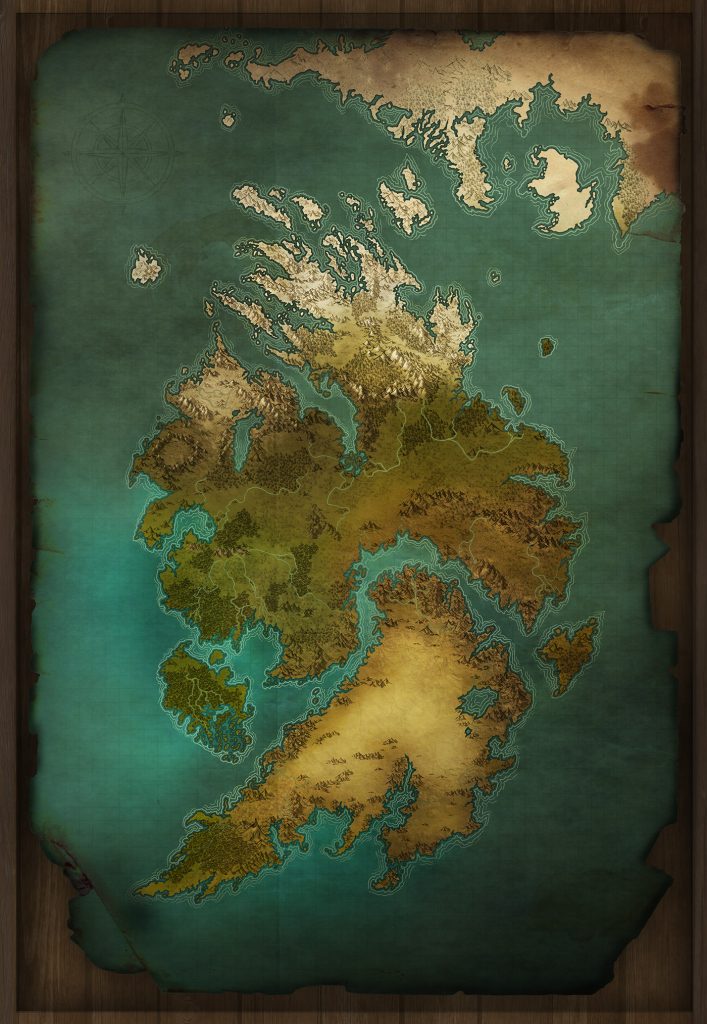…the author created the world. Then he started telling stories.
That’s certainly one way to go about writing a novel, but I wouldn’t recommend it!
A better approach to world-building is what I like to call the iterative approach. This basically means you build only as much as you need to get the story started, then add in more bits and pieces as the story progresses. Maybe you guessed it, but my day job is in IT, where iterative design processes are pretty common.
Let’s take a step back and talk about what world-building is – and why it matters.
Stories, especially something as complex as a full novel, cannot exist in a vacuum. They must be told in the context of the world (or the ‘setting’ as it’s sometimes called) they are taking place in. That world can be our own – or a variant of it. Or as is often the case for sci-fi and fantasy stories, a radically different reality.
The former typically means a lot less work for the author than the latter. If you’re writing the Next Big Fantasy Novel, you’ll need to come up with a lot of background to make a believable world. You’ll need to know a bit about geography, history, religion, peoples, naming conventions, customs, weather, and a million other things.

If your novel is set in a high school very much like the one you went to, you’ll already have most of the knowledge needed to present the world in a believable fashion. You might want to change the name of the school, place it in a different part of the country, and so forth, but it’s not going to be as work-intensive as that fantasy world.
Regardless of the kind of world you’ve chosen to place your story in, whether it’s a mundane town and its high school, or a massive fantasy kingdom filled with warring factions and strange races, it needs to be internally consistent.
That means two things:
1. Throughout the story, you have to present the same things the same way. If the main school building is three stories tall, it can’t suddenly be two or four stories later on, just because the story needs it to be. You’ll have to revise your story – or your setting – so that everything fits.
The same goes for characters by the way – they have to remain true to themselves. They can change, yes, but they can’t for no reason suddenly act and think differently from what they used to. But let us talk more about that some other time.
2. You’ll want to gradually show the reader more of the world as the story progresses. Not as an info-dump prologue or blocks of heavy exposition, but as a natural part of what’s happening in your novel. The reader is shown more parts of the world as the action moves around. Characters talk about things that have happened in the past. This gives the reader a feeling that there is a larger world out there, one that makes sense, and is interesting to learn more about.
Again it’s almost the same with your characters: you want to introduce them gradually, not through a block of text that simply states who they are and what they are like.

To summarize: you need to have an idea of what your setting is like before you start writing if you want to present a coherent whole. If it’s not coherent, you’ll run into trouble later and your readers will notice (they won’t be very impressed).
As an added benefit, I find writing to be much easier if I have a clear and strong worldview in my head. Ideas come more easily, the dialogue flows more freely, and I instinctively know when to reveal some tidbits about the setting to my readers.
Now we can return to the iterative approach to world-building:
I’ll start by coming up with a rough framework, then add some details that are relevant to the start of the story. Next, I’ll write a few chapters. As I do that, I’ll notice where I’m lacking setting details and note it down. I will usually have some great ideas for the setting as I write, unrelated to the chapters I’m currently writing. I’ll note down those too.
When I’m done with the current chapters, I go back to my world bible (a text document where I structure all setting info) and expand on the bits I found lacking and add entries for whatever good ideas came up. Then I go back to the recently written chapters and add in the missing details. Then I write a few more chapters, taking notes, going back, and updating the manuscript, repeating as needed.
Sometimes I have sessions where I just do a lot of worldbuilding, structuring old notes or expanding upon stuff that’s been left blank. This typically happens when the first draft is either finished or at least close to it.
When finally I have a comprehensive, well structured bible that covers everything I need, I can do a second draft, making sure everything fits together, and adding in additional setting details wherever it seems natural to do so.
Tip 1: Don’t try to fit every setting detail into your finished novel. That’s too much. Show and tell only what’s relevant. The rest is for your eyes only, the secret framework upon which the novel hangs.
Tip 2: At some point you have to stop the setting revisions and say: “this is it,” or you’ll never be finished with the actual story as it is dependent on the framework beneath.

I’ll wrap up with a few examples:
Example 1:
In my novel Cabin Fever (genre: paranormal-romance-erotica), I started the iterative approach by placing the story in a world very much like the real one. Except there is a hidden, supernatural world out of view of normal people. Witches, warlocks, werewolves, vampires, the works. But at this stage, I didn’t need any details on those bits. I then provided some additional details by placing the MC in a fictional city not entirely unlike the one I live in.
After writing a few chapters it’s revealed that one character (a villain) is maybe a witch and the MC might have a supernatural connection as well. That’s when I sat down and expanded upon the mythical and magical aspects of the setting. In doing so, I got a lot of ideas about how to advance the story.
Locations used in the rest of the story were all known to me: a Scandinavian city, generic office and apartment buildings, a cabin in the woods, snow mountains and forests, and didn’t require many notes to be coherent and believable.
After the first draft was done, I revised my notes a bit, then went back and made sure everything was consistent and that enough (but not too much) setting info was leaking through and that was it.
Example 2:
In my fantasy WIP Daughter of the Dragon, I started by deciding to use a variation of the same magic system and cosmology I had created for another novel. I wanted a pretty standard fantasy-Europe kind of world, but I didn’t want the connection to be overwhelming. Which led me to scrap the Norse-Greek-Egyptian gods from that other novel, and replace them with unique “fantasy-flavor” gods (at this stage I didn’t detail them). I made a little map of the local area, focusing on the village where the story begins, and a world map (more of a sketch really) placing the village in a kingdom, and the kingdom on a continent.
Then I wrote a rough draft of 3 chapters, 1 for each of 3 MCs. After doing that, I had gotten a lot of new setting ideas – and discovered many areas that I needed to expand upon. In fact, I felt I was lacking too much context to go forward with the story. After a few setting-only sessions, I had a more comprehensive world bible and could continue. Next, I redid those 3 first chapters, in the process making them 6 full chapters instead as the setting, the plot, and the characters themselves bloomed in my mind.
Until next time
Felix

